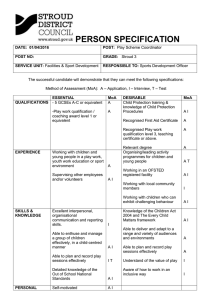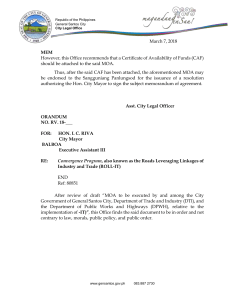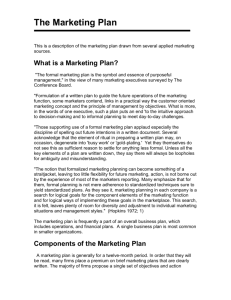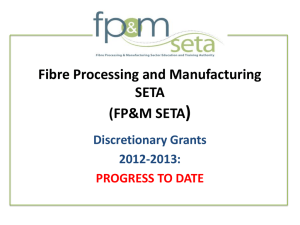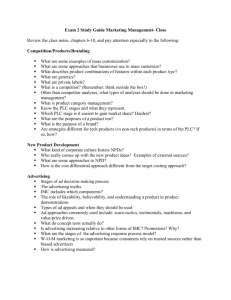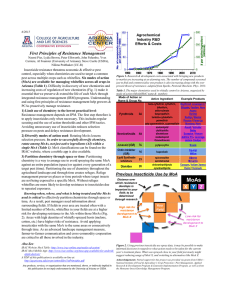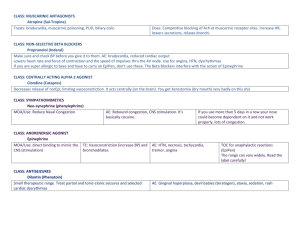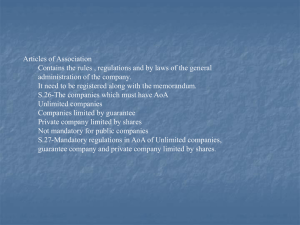MARKETING PLAN OUTLINE
advertisement
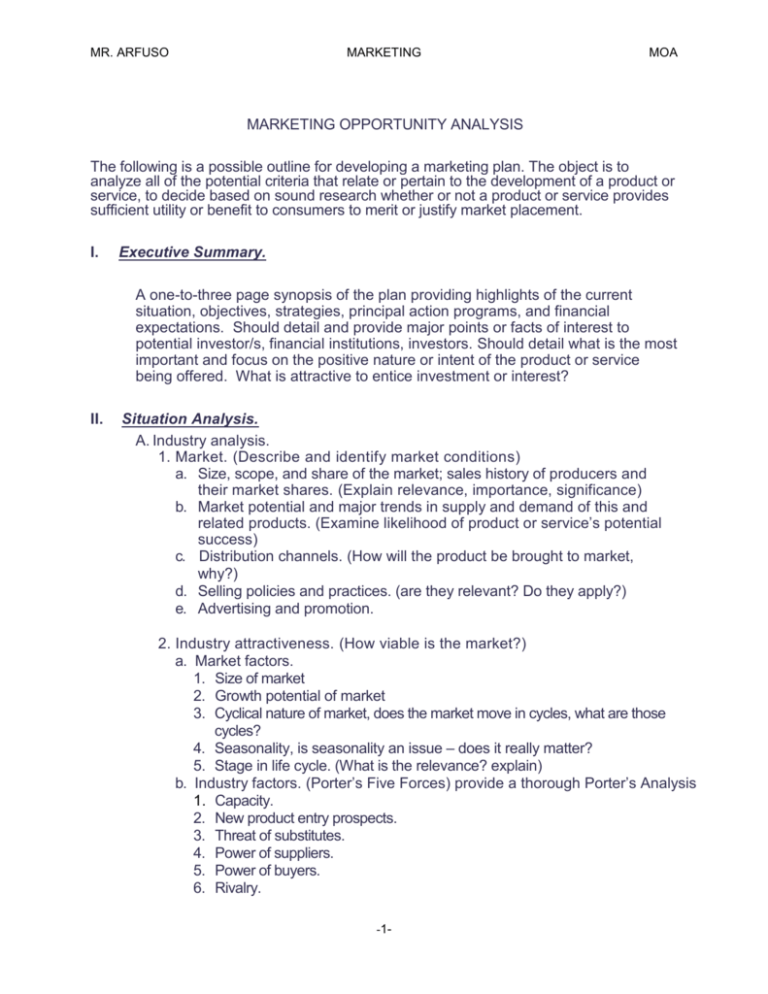
MR. ARFUSO MARKETING MOA MARKETING OPPORTUNITY ANALYSIS The following is a possible outline for developing a marketing plan. The object is to analyze all of the potential criteria that relate or pertain to the development of a product or service, to decide based on sound research whether or not a product or service provides sufficient utility or benefit to consumers to merit or justify market placement. I. Executive Summary. A one-to-three page synopsis of the plan providing highlights of the current situation, objectives, strategies, principal action programs, and financial expectations. Should detail and provide major points or facts of interest to potential investor/s, financial institutions, investors. Should detail what is the most important and focus on the positive nature or intent of the product or service being offered. What is attractive to entice investment or interest? II. Situation Analysis. A. Industry analysis. 1. Market. (Describe and identify market conditions) a. Size, scope, and share of the market; sales history of producers and their market shares. (Explain relevance, importance, significance) b. Market potential and major trends in supply and demand of this and related products. (Examine likelihood of product or service’s potential success) c. Distribution channels. (How will the product be brought to market, why?) d. Selling policies and practices. (are they relevant? Do they apply?) e. Advertising and promotion. 2. Industry attractiveness. (How viable is the market?) a. Market factors. 1. Size of market 2. Growth potential of market 3. Cyclical nature of market, does the market move in cycles, what are those cycles? 4. Seasonality, is seasonality an issue – does it really matter? 5. Stage in life cycle. (What is the relevance? explain) b. Industry factors. (Porter’s Five Forces) provide a thorough Porter’s Analysis 1. Capacity. 2. New product entry prospects. 3. Threat of substitutes. 4. Power of suppliers. 5. Power of buyers. 6. Rivalry. -1- MR. ARFUSO MARKETING c. Environmental factors. (Describe how and why these may or may not matter) Compare and contrast 1. Social. 2. Political. 3. Demographic. 4. Technological. 5. Regulatory. B. Sales analysis. 1. Market area performance versus company average. 2. Trends of sales, costs, and profits by products. 3. Performance of distributors, end-users, key customers. 4. Past versus current results by area, product, channel, and so on. C. Competitor and company analysis. 1. Behavior. a. Product features. b. Objectives. c. Strategies. d. Marketing mix. e. Profits. f. Value chain. 2. Resources. a. Ability to conceive and design new products. b. Ability to produce or manufacture. c. Ability to market. d. Ability to finance. e. Ability to manage. f. Will to succeed in this business. 3. Expected future marketing strategies. D. Customer analysis. 1. Who are the customers? 2. What do they buy? 3. Where do they buy? 4. When do they buy? 5. How do they choose? 6. Why do they select a particular product? 7. How do they respond to marketing programs? 8. Will they buy again? (loyalty) 9. Long-term value of customers. 10. Segmentation. -2- MOA MR. ARFUSO MARKETING MOA E. Planning assumptions and forecasts. 1) Market potential. 2) Projections, predictions, and forecasts. III. Objectives. A. Corporate objectives (if appropriate). B. Divisional objectives (if appropriate). C. Overall marketing objectives. 1) Sales volume and profit (sales, share, and so on). 2) Market acceptance (brand equity; customer acquisition, retention, expansion, dele D. Program objectives. 1) Pricing. 2) Advertising/promotion. 3) Sales/distribution. 4) Product. 5) Service. IV. Marketing Strategy. (How the objectives will be achieved.) A. B. C. D. Customer targets. Competitor targets. Core strategy. Strategic alternative/s considered. V. Marketing Programs. A. B. C. D. E. F. G. H. I. J. Product development. Advertising/communication. Pricing/promotion. Distribution. Sales. Direct marketing and customer management. Internet. Service. Partnerships/alliances. Market research. VI. Financial Documents. A. Budgets. B. Pro forma statements. VII. Monitors and Controls. (Specific research information to be used:) -3- MR. ARFUSO MARKETING A. Secondary data. 1. Sales reports. 2. Orders. 3. Informal sources. B. Primary data. 1. Sales records (Nielsen, IRI). 2. Specialized consulting firms. 3. Customer panel. VIII. Contingency Plans and Other Miscellaneous Documents. A. Contingency plans. B. Alternative strategies considered. C. Miscellaneous. -4- MOA
